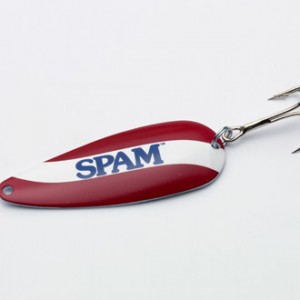Many people continue to use the Spam button to opt out of emails, rather than bother to unsubscribe. They don’t care or realize that the Spam button works against you, the email marketer. They only know they don’t want to hear from you any longer and flagging your email as spam will make it go away.
Knowing this, you’re probably not surprised to learn that marketing email results in more spam complaints than any other type of email. How much more might surprise you, however. Among the key findings of the Return Path Email Intelligence Report Q3 2012 is this startling statistic: marketing emails account for 70% of spam complaints although they make up only 18% of total email volume! In addition, commercial email accounts for 60% of the email caught in spam traps.
Why such high numbers, you ask? Plenty of marketers play a little loose with the definition of “permission-based” email, meaning plenty of inboxes are filled with unwanted messages, and others are sloppy at keeping lists clean. This leads to spam traps, literally. But even legit marketers can be labeled spam simply because the recipient tires of hearing from them. It could be the once enthusiastic subscriber moved on and no longer needs what you sell. Think of the parent whose child has grown and gone, or the manager who moved on to another position. Or it could be your monotonous messages never say anything new, so what’s the point of continuing to get them?
Reasons for spam complaints are likely as numerous as the complainers themselves. Regardless of the reasons for reports of spam, it’s imperative that you do whatever you can to avoid them. Here’s why you don’t want to be considered spam, and how to avoid such mislabeling.
Why spam is a label to be avoided
The biggest and costliest reason to avoid a spam report is your email deliverability.
Whether your email is legitimate or not, being flagged as spam or landing in a spam trap means a negative effect on your online sending reputation, a key metric ISPs use to decide if your emails are to be allowed through or not. If the ISP decides “not,” it could mean you’re going to start seeing email deliverability problems. Email deliverability issues keep 18% of email from reaching the inbox in the U.S. (Numbers are higher and lower elsewhere in the world, but Europe with the lowest rate still has 16% of email never reaching the inbox.)
And those inbox placement rates are declining ever downward. According to the Return Path study, North American inbox placement rates went down 3% in the third quarter of 2012 compared to the year before. The decline was even greater in Europe and Latin America. Keep in mind: emails that aren’t delivered aren’t opened or clicked on either…meaning they never generate any ROI. Ever.
If it walks like spam and talks like spam…
Spam is in the eye of the beholder, and you’ll likely never be spam proof to all of the people all of the time. But you can be a smart email marketer and take simple steps to protect yourself from that dreaded—and damaging—label. Below are just a few of the email best practices you can implement to stay free of the spam label and keep your email deliverability rate high.
Keep it fresh
If your email messages are only the same old, same old, subscribers will get bored with them and opt out…sometimes with the spam button. This monotony might be the result of the same content each time, or repeated “special offers” that stop being special. Or it could be your emails are too busy selling to ever engage. Review your email campaigns and check your metrics to see which kinds of content appeals the most, plus the content that appeals the least. Do more of the former and less of the latter, but above all, keep it fresh.
Pay attention
Be diligent after the “send” and pay attention to your results. Also pay attention to your email list hygiene, keeping your list scrubbed and clean on a regular basis. Develop a plan for re-engaging inactive subscribers, as well as the indicators you’ll use to determine when someone falls into the inactive category. When someone unsubscribes, ask why and take to heart the feedback you receive, working to improve.
Avoid spam traps
There are two kinds of traps to watch out for: those made up of trick email addresses meant to ensnare (a sure sign you’re getting email addresses from a questionable source), and those made up of addresses that used to be legitimate but haven’t been used in over 18 months (a sure sign you’re failing to scrub your list on a regular basis, or, like the first, acquiring addresses from a dubious source).
Email less
Although keeping up email frequency is a big key to emarketing success, the Return Path report points out that there seems to be a correlation between email send rate and email complaint rate. Testing will help you decide whether or not to change your email frequency. But if it leads to fewer spam complaints, emailing less often might in the long run do enough to improve your email deliverability rate (and therefore ROI) to make it make sense. Find the balance the only way possible: test.
Make unsubscribing easy
The more obvious you make the option to unsubscribe, the more likely someone will click that option rather than flag you as spam. You might even consider offering the unsubscribe link at the top of the page! No ISP will penalize you because someone unsubscribed from your email list. But they will if that someone reports you as spam. If your unsubscribe is at the top of the page and leads to more unsubscribes than usual, that probably means you’ll also see fewer spam complaints than usual.
Kiss those who never look at you goodbye
The subscribers who never open your emails are not just worthless; they can cost you your sender reputation. They may be from long abandoned accounts (where ISPs sometimes like to park spam traps), or they may simply have experienced changes in life, work, or interests…and you’re no longer one of them. If you can get a list of all inactive subscribers who haven’t opened an email from you in months, or a year, or more, cull those addresses. Keep inactives out of your mailing. Later you can hit them with a good re-engagement campaign.
Those are just a handful of tips for staying out of the spam box. Here’s even more spam-proofing advice. In the end, the best advice is to heed the recommendations of email marketing experts and follow the best practices that are both tried and true, and well-tested if new.




